Buying Guide for the Best Fish Finders
Choosing the best fish finder can make your fishing trips much more successful and enjoyable. Fish finders use sonar technology to detect fish and underwater structures, helping you decide where to cast your line. When picking a fish finder, it's important to match its features to your fishing style, whether you're in a small boat, a kayak, or fishing on a big lake, river, or the ocean. By understanding a few key specifications, you can confidently select a fish finder that meets your needs and enhances your time on the water.Sonar Technology (CHIRP, Traditional, Down Imaging, Side Imaging)Sonar technology is what a fish finder uses to detect what's underwater. Traditional sonar gives a general idea of fish and bottom structure, while CHIRP sonar sends continuous signals for a clearer, more detailed view. Down imaging provides sharp pictures directly beneath your boat, and side imaging lets you see a wide area to each side. If you fish in shallow or calm waters and mostly want basic fish and structure detection, traditional or CHIRP sonar is usually enough. For anglers wanting the most detailed pictures or exploring large or unfamiliar areas, down or side imaging is very helpful. Think about where you fish and how much detail you want when choosing the right sonar type.
Display Size and ResolutionThe display is how you see all the information from your fish finder. A bigger screen makes it easier to read maps and sonar images, especially from a distance or in bright sunlight. Higher resolution means clearer and more detailed pictures. If you have a smaller boat or are close to the unit, a small display might be fine, but if you want to see a lot of detail or several pieces of information at once, a bigger, higher-resolution screen is better. Pick your display size and clarity based on your space, eyesight, and how much information you want to view at once.
Power Output (Wattage)Power output affects how deep and how clearly a fish finder can 'see' under the water. Higher wattage means stronger sonar signals and the ability to see deeper and with more detail. Lower wattage is usually enough for shallow water, like ponds or small lakes, while higher wattage is important for deep lakes or ocean fishing. Match the power output to the typical depth and water conditions where you'll be using the fish finder.
FrequencyFrequency measures how often the sonar signal is sent. Lower frequencies go deeper but provide less detail, while higher frequencies give more detail but don't penetrate as far underwater. Some fish finders let you choose or combine frequencies. If you fish in deep water, look for lower frequencies; in shallow water, higher frequencies give sharper images. Consider whether depth or image detail is more important for your style of fishing.
GPS and MappingMany fish finders come with GPS and mapping features. GPS lets you mark hot fishing spots, navigate, and track your route, while mapping features show underwater contours and help plan trips. If you fish in large or unfamiliar waters, GPS and detailed maps are extremely useful for finding your way and returning to good fishing locations. If you only fish in small, familiar areas, you may not need these features.
PortabilityPortability refers to how easy it is to move and set up the fish finder. Portable fish finders are great if you fish from a kayak, rent boats, or fish from the shore, as they are lightweight and easy to install and remove. Fixed, mounted units offer more stability and larger displays but are best for boats with a permanent setup. Choose based on how and where you fish most often.
Transducer TypeThe transducer is the part of the fish finder that sends out and receives sonar signals. Some are designed for mounting on the bottom of a boat (transom mount), while others may be installed through the hull or even attached to a trolling motor. Your boat, how you use it, and your willingness to install equipment can help you choose the right type of transducer.
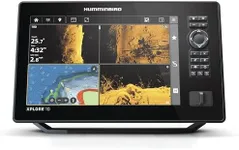

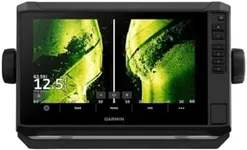
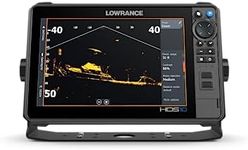
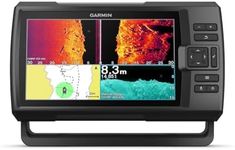

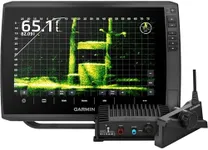
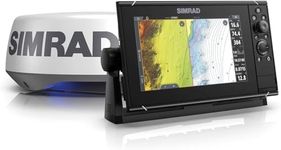
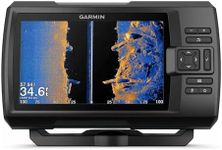

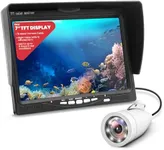

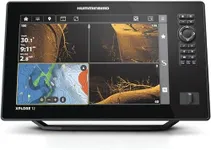
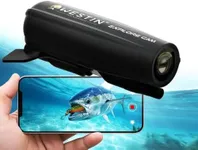

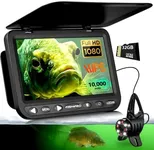
![[FishPRO® 2025 Upgrade] 4.5'' True HD 1080P Underwater Fishing Camera w/DVR-32GB, (NO Need Learn) Ice Fishing Camera Underwater, Ice Fish Finder Camera - w/ 5,000mAh & USB-C, IR+LED, 20m/66ft](https://images-proxy.bestreviews.guide/4G9-qKn8vG_Ghloj8iQKuMikCNM=/0x150/https://m.media-amazon.com/images/I/51BAH60l9ML._AC_CX679_.jpg)
![[FishPRO®2025 Upgrade] [Auto-Focus 2''- 40''] Underwater Fishing Camera w/DVR 32GB,1200TVL, Ice Fishing Camera Underwater Fish Finder, w/IR+LED Light for Dark, 4500mAh w/ [Spare Charging Port], 49ft](https://images-proxy.bestreviews.guide/WnKlLKAWepHIBfamm6nAWbCrY2Y=/0x150/https://m.media-amazon.com/images/I/51hexOA1C9L._AC_CX679_.jpg)



